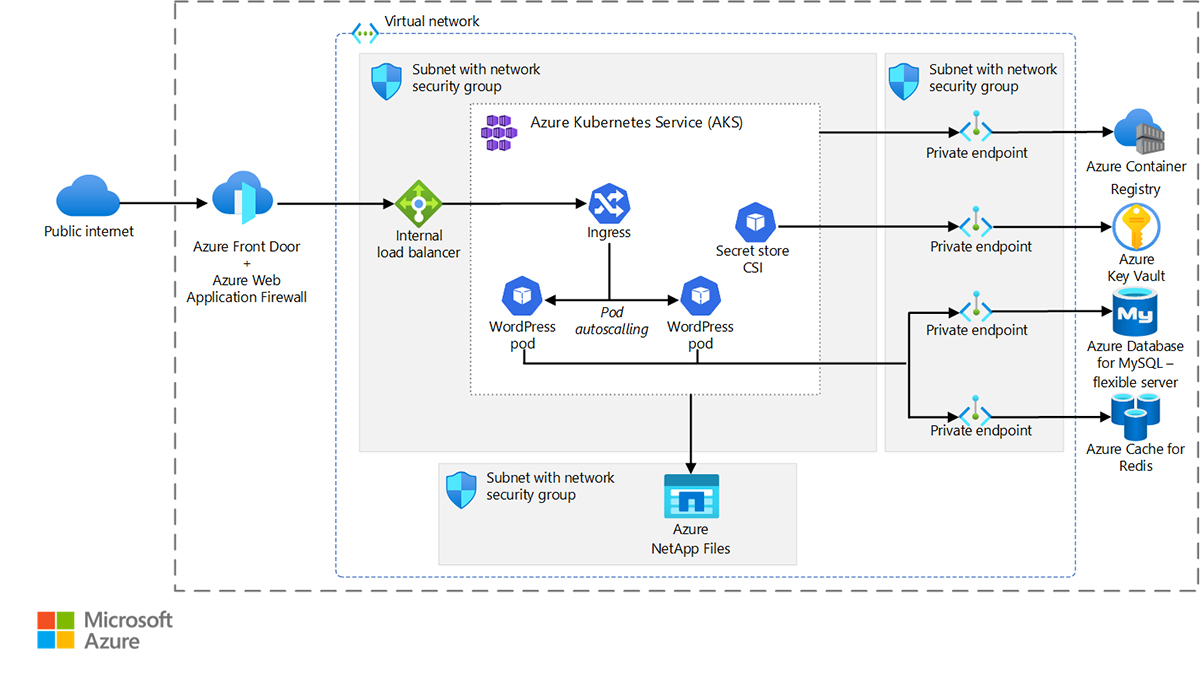No products in the cart.
Maximize WordPress Uptime with Kubernetes Deployment
In the ever-evolving digital landscape, ensuring that your WordPress site remains accessible, responsive, and scalable is paramount. Leveraging Kubernetes for deploying WordPress can significantly enhance its scalability and availability, providing a robust solution for high-traffic websites.
Understanding the Need for Scalability and High Availability
Scalability is the capability of your WordPress site to accommodate growing traffic demands by dynamically adjusting its resources. High availability, on the other hand, guarantees continuous site accessibility and uptime, even during hardware malfunctions or sudden surges in visitor volume. Together, these components contribute to a reliable and seamless experience for users.
Deploying WordPress on Kubernetes
As a comprehensive orchestration solution, Kubernetes streamlines the deployment, scaling, and lifecycle management of container-based workloads. Hosting WordPress on Kubernetes facilitates the use of its robust features to support both scalability and high availability.
Containerization of WordPress: Begin by containerizing your WordPress application using Docker. This involves creating a Docker image that encapsulates your WordPress installation, including all necessary dependencies.
- Setting Up Kubernetes Cluster: Deploy a Kubernetes cluster using a cloud provider like AWS, Google Cloud, or Azure. Ensure that your cluster is configured with multiple nodes to support high availability.
- Persistent Storage: Utilize Kubernetes Persistent Volumes (PVs) and Persistent Volume Claims (PVCs) to manage storage for your WordPress data. This setup ensures that your data persists across pod restarts and node failures.
- Database Deployment: Deploy a MySQL or MariaDB database as a StatefulSet in Kubernetes. This approach maintains stable network identities and persistent storage for each database instance, crucial for data consistency.
- Load Balancing: Implement a Kubernetes Service of type LoadBalancer to distribute incoming traffic evenly across your WordPress pods. The setup optimizes application performance by enhancing its scalability and availability.
- Horizontal Pod Autoscaling: Configure Horizontal Pod Autoscalers (HPAs) to automatically adjust the number of WordPress pods based on CPU utilization or other select metrics, ensuring optimal resource utilization.
- Monitoring and Logging: Integrate monitoring tools like Prometheus and Grafana to keep track of your application’s performance. Make use of logging tools like ELK Stack or Fluentd to efficiently manage and centralize log data across your systems.
Best Practices for High Availability
To further enhance the availability of your WordPress site, consider the following best practices:
- Multi-AZ Deployment: Deploy your Kubernetes cluster across multiple Availability Zones to protect against data center failures.
- Automated Backups: Implement automated backup solutions for your WordPress data and database to prevent data loss.
- Disaster Recovery Planning: Develop and test disaster recovery plans to quickly restore service in case of catastrophic failures.
- Security Measures: Apply security best practices, including regular updates, secure communication channels, and access controls, to protect your application from vulnerabilities.
Conclusion
Deploying WordPress on Kubernetes offers a scalable and highly available solution for hosting your website. By following the outlined steps and best practices, you can ensure that your WordPress site remains performant and resilient, capable of handling varying traffic loads without compromising user experience.
 [/vc_column_text]
[/vc_column_text]
Check out our newest blog entry (DNS Demystified: How Domain Name System Powers the Web)


